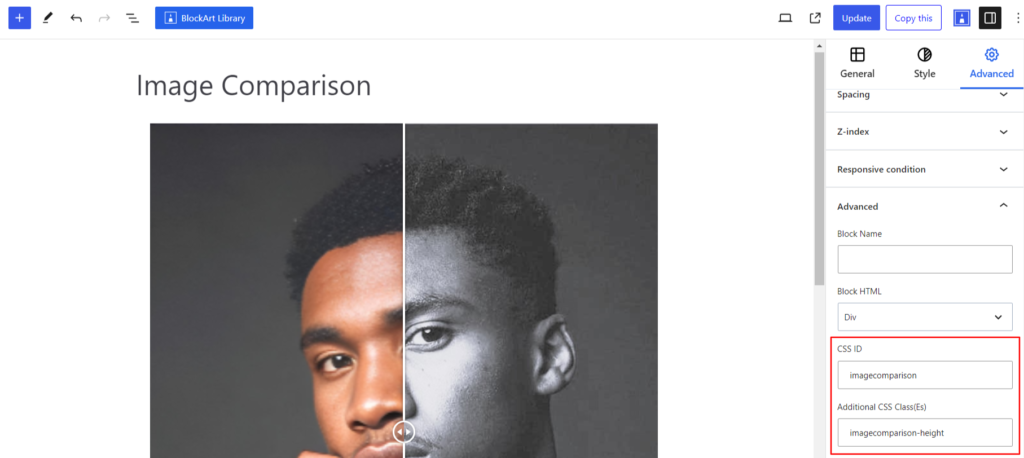The Image Comparison Block compares two images with a slider. It places two images side by side and uses a slider to compare the differences between them.

After you have chosen the Image Comparison block, you’ll get a block editing panel on the right-hand side. It has three options, i.e., General, Style, and Advanced. These options customize the design and other elements of the block. Let’s explore one by one below:
General #
Layout #
- Orientation – It allows the image to be displayed either horizontally or vertically.
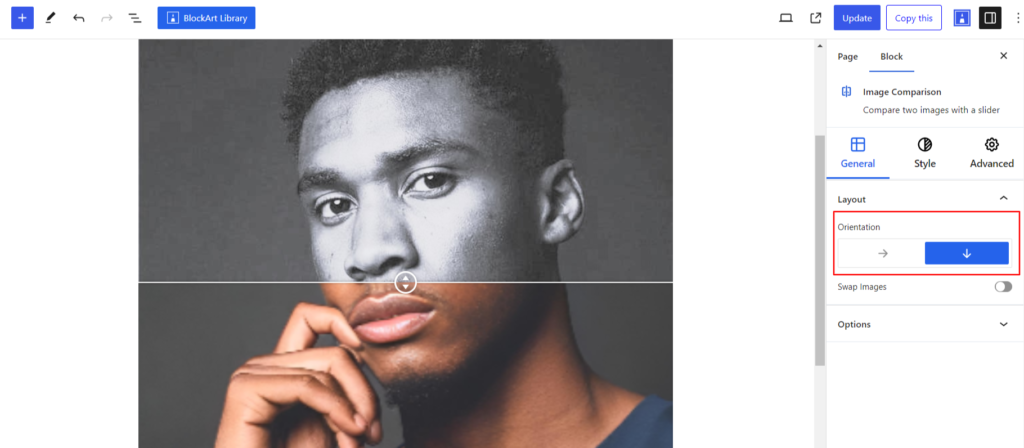
- Swap Images – It changes the position of the image with one another.
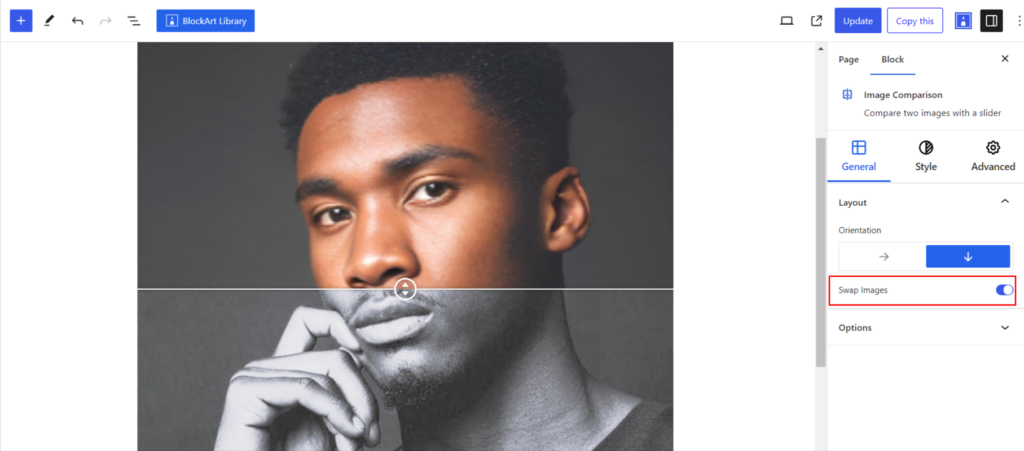
Options #
- Comparison Slider – By default, the slider is displayed with the button over the image. You can either display the button only or remove the slider appearing.
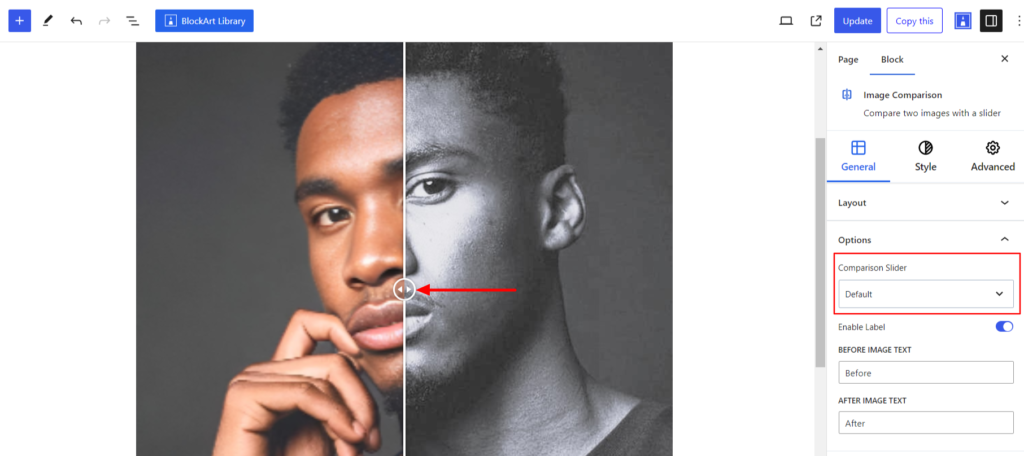
- Enable Label – It enables the Label to appear over the image and comes up with the following options:
- Before Image Text – It changes the default Before text appearing.
- After Image Text – It changes the default After text appearing.
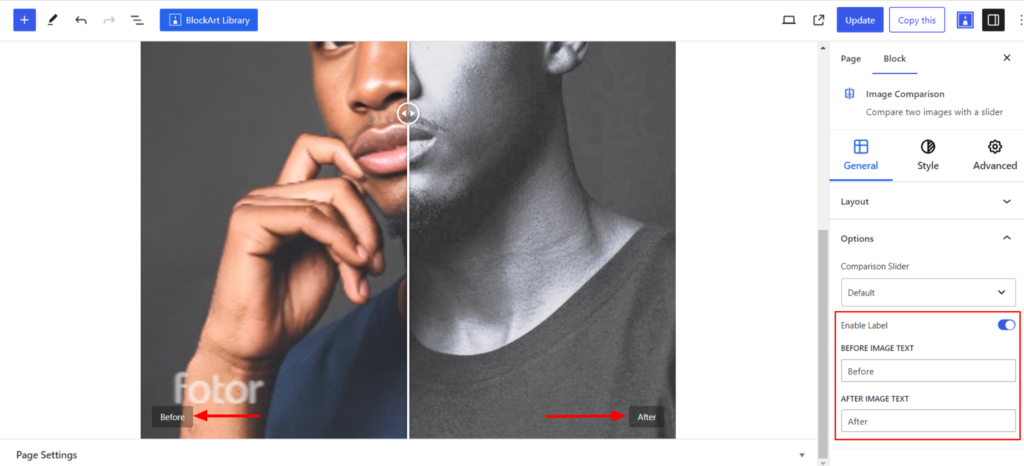
Style #
It provides the following styling options for the Image Comparison Block. These are listed below:
Label #
- Text Color – It changes the text color of the label text.
- Background – It sets the block’s background color of the label text.
- Typography – It allows you to control the label text’s typography, such as font family, weight, font size, line height, and other related styling properties. The options are listed below:
- Font Family – The option allows you to choose the appropriate font family for the text.
- Weight – It refers to the thickness or boldness of the text.
- Size – It controls the font size of the text.
- Line Height – It manages the space above and below the text.
- Letter Spacing – It controls the amount of space between characters in the text.
- Style – Using the property, you can set the text to be Italic or Oblique.
- Transformation – It changes the case of the text, such as lowercase, uppercase, and capitalized.
- Decoration – The styling is applied to the text to make it more visually appealing. The options include underline, overline, and line through.
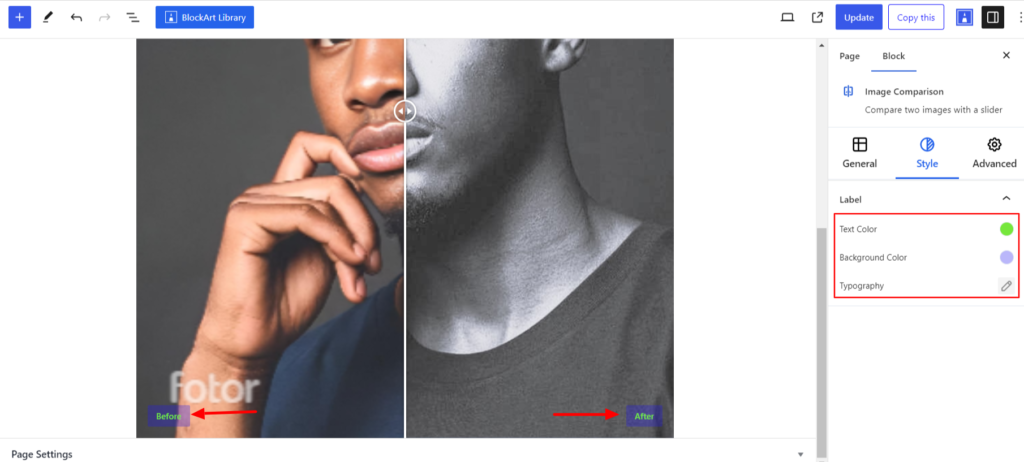
Advanced #
The Advanced section consists of four options for the Image Comparison block.
Spacing #
Under the spacing section, you can find the following options available:
- Block Margin – According to the site requirement, you can assign a specific margin value to the block along with units like px, em, %, and rem. Moreover, you can set the value of the different margins for various devices (Desktop, Tablet, and Mobile).
- Block Padding – According to the site requirement, you can assign a specific padding value to the block along with units like px, em, %, and rem. Moreover, you can set the different padding values for various devices (Desktop, Tablet, and Mobile).

Z-Index #
It allows you to set the priority of the Image Comparison block according to the site requirement.
Responsive Condition #
Using the option, you can enable/disable displaying the block on various screen sizes:
- Hide on Desktop – It hides the Image Comparison block on the Desktop.
- Hide on Tablet – It hides the Image Comparison block on the Tablet.
- Hide on Mobile – It hides the Image Comparison block on the Mobile.

Advanced #
Under the option, you can set the CSS ID and Classes for this particular Image Comparison block. The available options are listed below:
- CSS ID – It allows you to set specific IDs to style this particular block. Once you have set the ID, you can write the CSS Code to style the block using that particular ID.
- Additional CSS Class(es) – It allows you to add a CSS class to your block and write custom CSS to style this particular block.
After creating the separate ID and Classes, visit your CSS editor and write a style for the ID and class.
